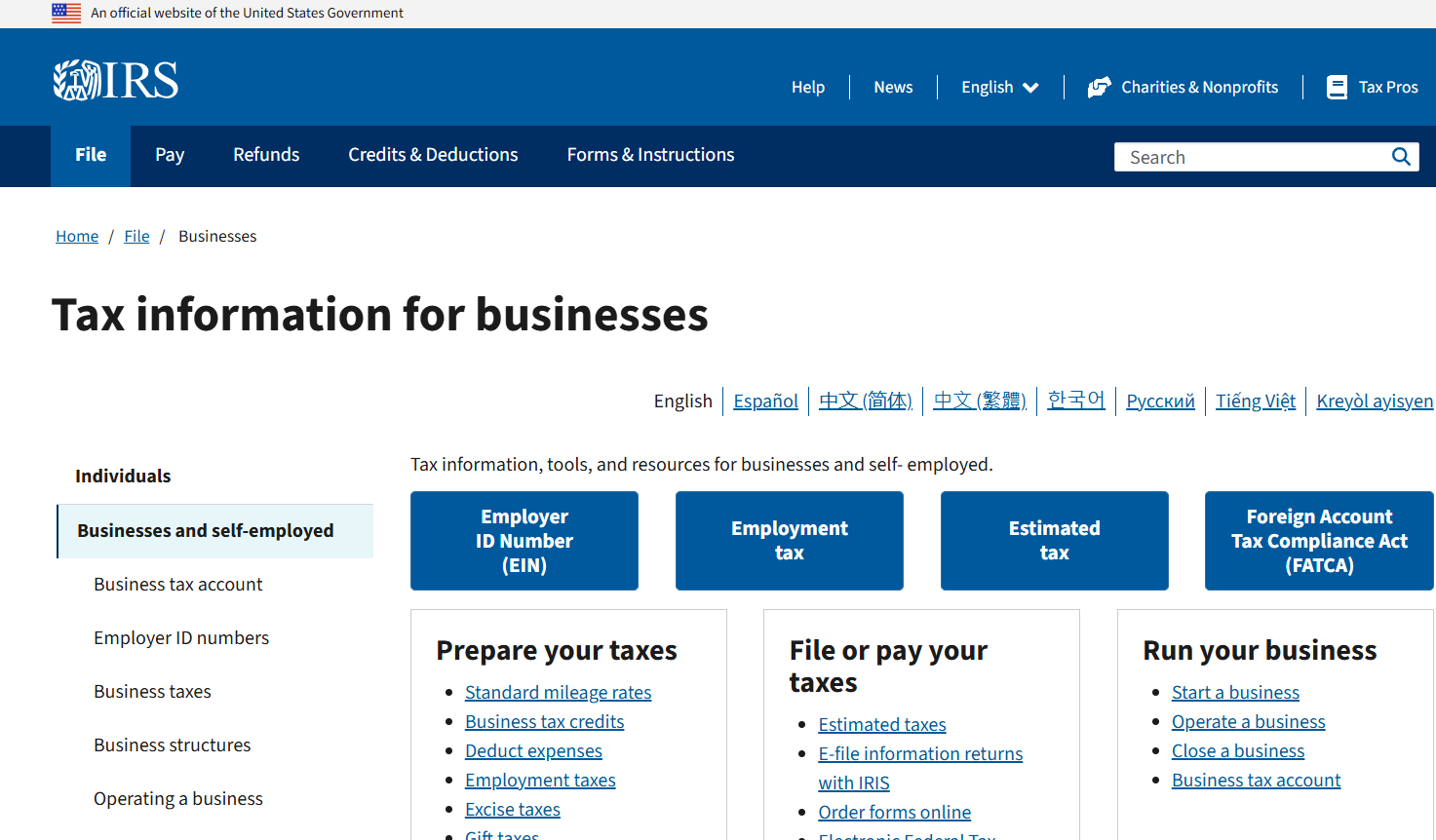One Big, Beautiful Bill 2025 - Impacts for Individuals
Key information for individuals
Significant new tax legislation (the Act) was signed into law July 4, 2025, formally known as One Big Beautiful Bill or, informally, the OBBB. The Act includes numerous changes affecting individual taxation.
Navigating these changes can be complex, and their impact on your specific tax situation will vary. We encourage you to review this list, which highlights some of the key provisions, and contact us at your earliest convenience to discuss the impact of these changes and develop a plan tailored to your situation.
• Reduced Income Tax Rates: The Act makes the lower individual income tax rates and wider tax brackets introduced by the Tax Cuts and Jobs Act "TCJA" permanent, preventing a scheduled tax rate increase after 2025. For example, the top individual rate will remain at 37% (instead of reverting to 39.6%), and the marriage penalty relief for most brackets continues. This means that married couples filing jointly will typically not face higher taxes compared to filing as singles.
• Increased Standard Deduction: The standard deduction has been permanently increased and enhanced for 2025 and beyond: $30,000 for joint filers, $22,500 for heads of household, and $15,000 for singles in 2025, with further increases to $31,500, $23,625, and $15,750, respectively, for 2026 and after. Because these higher amounts mean fewer taxpayers will benefit from itemizing, consider bunching itemized deductions into a single year to exceed the standard deduction, then take the standard deduction in alternate years.
• Child Tax Credit: The Child Tax Credit (CTC) has been permanently increased to $2,200 per qualifying child for tax years after 2024, and will be indexed for inflation in future years. Omission of a correct SSN on a return under the Code Sec. 24 child and other dependent credit rules will be treated as a mathematical or clerical error that IRS can summarily assess. To maximize these credits, ensure all dependents have the required identification numbers before year-end, and consider managing your income or accelerating deductions if your AGI is near the phase-out range.
• E&G-Basic Exclusion Amount: The basic exclusion amount for federal estate and gift tax will increase to $15 million (indexed for inflation) for estates of decedents dying and gifts made after Dec. 31, 2025. Review and update estate plans and consider making large lifetime gifts to tax advantage of this higher exclusion.
• Pease Limitation: Starting in 2026, the Pease limitation which reduced itemized deductions for high earners is permanently repealed. High-income taxpayers will see a much smaller 2/37 reduction apply to the lesser of their itemized deductions or the amount by which their taxable income exceeds the 37% tax bracket threshold. With this change, bunching deductible expenses into a single year can be effective, since the reduction is generally less severe than under the old Pease rules.
• Individual Alternative Minimum Tax Exemption Amounts: The AMT exemption amounts are permanently increased for 2026 and beyond, but the phaseout rate for higher-income taxpayers doubles from 25% to 50%. Taxpayers should review their AMT exposure and consider strategies such as timing income or exercising options in lower-income years to avoid unexpected AMT liability.
• Deduction for Taxpayers Age 65 or Older: For tax years 2025-2028, individuals age 65 or older (and their spouses, if filing jointly) can claim a new $6,000 deduction per qualified person. To maximize this benefit, seniors should aim to keep their adjusted gross income (AGI) below $75,000 (single) or $150,000 (joint), as the deduction is reduced by 6% of any excess. Be sure to include the correct Social Security Number for each qualifying individual to avoid disallowance of the deduction.
• Car Loan Interest: For tax years 2025-2028, individuals can deduct up to $10,000 per year in interest paid on loans for new personal-use vehicles even if they don't itemize deductions. The deduction phases out for single filers with MAGI over $100,000 and joint filers over $200,000. To qualify, the loan must be for a new, U.S.-assembled car, SUV, van, pickup, or motorcycle (under 14,000 pounds), secured by a first lien, with the taxpayer as the original owner, and the vehicle's VIN reported on the tax return. If you're planning to buy a new vehicle, consider timing your purchase and loan to maximize deductible interest within the eligible years, and manage your income to stay below the phase-out thresholds for the largest benefit.
• Child and Dependent Care Credit: Starting in 2026, the Child and Dependent Care Credit will be more valuable for many families. The maximum credit rate increases to 50% of eligible expenses, up to $3,000 for one qualifying individual or $6,000 for two or more. The full 50% rate applies to families with AGI up to $15,000 and gradually phases down to 35% for AGI up to $75,000 ($150,000 for joint filers). To maximize your benefit, be sure to keep thorough records of all qualifying expenses and coordinate with any employer-provided dependent care benefits to avoid missing out on the full credit potential.
• Contributions to Scholarship-Granting Organizations: New for tax years ending after Dec. 31, 2026, individual taxpayers can claim a federal income tax credit of up to $1,700 per year for cash contributions to qualifying scholarship-granting organizations (SGOs) in participating states. To maximize this benefit, confirm your state's participation and ensure the SGO is on the IRS-approved list before contributing.
• Disaster-Related Personal Casualty Losses: If you suffered a loss due to a federally declared disaster, you can now claim a personal casualty loss deduction even if you don't itemize. The standard deduction is increased by the amount of the net disaster loss. Be sure to document your losses and insurance claims, and consider filing an amended return if you missed claiming a qualified loss in a prior year.
• American Opportunity and Lifetime Learning Credits: Starting in 2026, you must include the Social Security Number (SSN) of the student (or yourself or your spouse, if applicable) and the Employer Identification Number (EIN) of each college or university when claiming the American Opportunity Tax Credit (AOTC). To avoid losing this valuable credit due to a clerical error, make sure all SSNs are issued before the tax return deadline and that you have the EIN for each institution. Doublecheck that these numbers are entered correctly on your return, as missing or incorrect information will result in the IRS denying the credit.
• Eligibility to Enroll in Qualified Health Plan: Starting in tax years after 2027, you can only claim the premium tax credit (PTC) for months when the health insurance Exchange has verified that you are eligible to enroll in a qualified health plan (QHP) and to receive advance PTC payments. To avoid losing your credit, be sure to file your federal tax return on time each year. Promptly report any changes in income, family size, or other circumstances to the Marketplace within 30 days, and respond quickly to any requests for information.
• Deduction for Qualified Residence Interest: The deduction for mortgage interest on home acquisition debt is now permanently capped at $750,000 ($375,000 if married filing separately), rather than increasing to $1 million in 2026 as previously scheduled. If you are considering buying a home, refinancing, or taking out a new mortgage, be aware that interest on debt above $750,000 will not be deductible.
• Miscellaneous Itemized Deductions: The Act permanently eliminates miscellaneous itemized deductions for individual taxpayers. This doesn't apply however to itemized deductions under Code Sec. 67(b) . And the Act adds a new deduction thereunder for educators, allowing K-12 teachers, counselors, coaches, and aides working at least 900 hours per year to deduct unreimbursed classroom expenses (like books, supplies, and equipment) starting in 2026.
• New Tax -Deferred Investment Accounts for Children: Taxpayers can open a new tax -deferred investment account for children, called a "Trump account" for each eligible child. Taxpayers can contribute up to $5,000 per year in after-tax dollars for each child, and funds must be invested in a diversified U.S. equity index fund. For children born between Jan. 1, 2025, and Dec. 31, 2028, the federal government will automatically contribute $1,000 to each account. Taxpayers should open the account before their child turns 18 to maximize contributions and secure the government benefit if eligible.
• Adoption Credit: Starting in 2025, the adoption credit is enhanced to include a refundable portion of up to $5,000 per child (indexed for inflation). This means eligible taxpayers can receive up to $5,000 as a refund even if they owe no tax, making the credit more valuable for lower-income families. To maximize this benefit, keep detailed records of all qualified adoption expenses, ensure you have a taxpayer identification number for the child, and file Form 8839 in the year the adoption is finalized.
• Qualified Higher Education Expenses: Changes to 529 savings plans allow families to use tax-free distributions for a much broader range of K-12 education expenses including not just tuition, but also curriculum, books, online materials, tutoring, standardized test fees, dual enrollment, and educational therapies for students with disabilities. Starting in 2026, the annual limit for K-12 distributions doubles from $10,000 to $20,000 per beneficiary. To maximize tax savings, consider timing 529 withdrawals to match qualified expenses within the same tax year, and coordinate with other education tax credits to avoid overlap.
• Higher Education Expenses for 529 Accounts: 529 plan distributions can now be used tax -free for a wider range of education expenses, including not only college costs but also "qualified postsecondary credentialing expenses." This means you can use 529 funds for tuition, fees, books, supplies, and equipment required for enrollment in recognized certificate, licensing, or apprenticeship programs even if they are not traditional degree programs.
• Individuals' Charitable Deductions: Beginning in 2026, the Act makes permanent the 60% ceiling for cash gifts to 50% charities, and provides that a contribution of cash to a 50% charity is deductible to the extent that the total amount of contributions of cash to 50% charities doesn't exceed the excess of: (a) 60% of the taxpayer's contribution base for the tax year, over (b) the total amount of contributions to 50% charities for the tax year. To maximize your deduction, prioritize cash donations to 50% charities.
• Limitation on Casualty Loss Deduction: Starting in 2026, personal casualty loss deductions are permanently limited to losses from federally declared disasters (and certain state-declared disasters). If you experience a loss due to a qualifying disaster, be sure to keep detailed records.
• Remittance Transfers: Starting in 2026, a new 1% excise tax will apply to remittance transfers from U.S. senders to recipients in foreign countries. Transfers funded with cash or through non-U.S. payment apps may be subject to the tax, so plan ahead and use the exempt methods (i.e., the remittance transfer is withdrawn from a financial institution governed by Title 31, Chapter 53 or funded with a U.S.-issued debit or credit card) whenever possible to minimize your tax liability on international money transfers. This provision is effective for transfers made after Dec. 31, 2025, so review your remittance practices before year-end to take advantage of these exceptions and avoid unnecessary taxes.
• Wagering Losses: Starting in 2026, only 90% of your wagering losses can be deducted against your winnings, even if your losses equal or exceed your winnings. To maximize your deductions, consider realizing wagering losses in 2025 before the new rule takes effect, and keep detailed records of all activity.
• Deduction and Exclusion for Moving Expenses: Moving expenses are now permanently nondeductible for most taxpayers, and any employer reimbursement for moving costs is fully taxable as income. If you expect to relocate for work, consider negotiating with your employer to cover the additional taxes you'll owe. Only active-duty military members moving under orders and, starting in 2026, certain intelligence community employees remain eligible to deduct or exclude qualified moving expenses, so these individuals should track and document all eligible costs for tax purposes.
• ABLE Accounts: The Act permanently provides for additional contributions to Achieving a Better Life Experience (ABLE) accounts for employed individuals with disabilities. It also adjusts the base limit amount by one year for inflation. The Act also permanently allows beneficiaries who make qualified contributions to their ABLE account to qualify for the Saver's Credit. To maximize tax benefits, ensure the designated beneficiary personally makes contributions by year-end to qualify for the Saver's Credit, which is now permanently available for ABLE contributions and will increase to a maximum of $2,100 starting in 2027.










